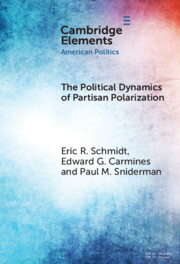Element contents
The Political Dynamics of Partisan Polarization
Published online by Cambridge University Press: 20 March 2025
Summary
- Type
- Element
- Information
- Series: Elements in American PoliticsOnline ISBN: 9781009472760Publisher: Cambridge University PressPrint publication: 27 March 2025

